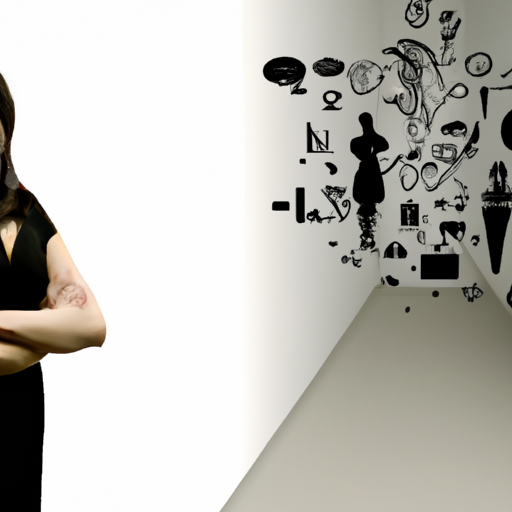
Picture this: you find yourself in the midst of a budding friendship or a casual dating scenario. Things are going well, but there’s a nagging feeling at the back of your mind. Are you unintentionally leading the other person on? It’s a common concern, and one that deserves attention. In this article, we’ll explore practical steps you can take to ensure that you’re not inadvertently giving false hope or mixed signals.
Understanding the importance of clear communication, we’ll delve into strategies to establish boundaries and convey your intentions honestly and kindly. We’ll also discuss the significance of being self-aware and mindful of your actions, as well as recognizing signs that may indicate the other person is developing stronger feelings than you. By following these guidelines, you can navigate relationships with integrity, ensuring that both parties are on the same page and no one ends up hurt or confused. So, let’s dive in and unravel the keys to preventing unintentional miscommunication.

Learn How to Get Ready For your Date Right Here!
Communicating openly and honestly
When it comes to relationships, whether romantic or platonic, open and honest communication is essential. Expressing your intentions clearly is crucial in order to avoid leading someone on. Make sure to articulate your desires, whether you are seeking a committed relationship or simply enjoying the present moment. By clearly stating your intentions, you allow the other person to make informed decisions about their own feelings and expectations.
In addition, being transparent about your own feelings is important. It can be easy to fall into the habit of keeping your emotions guarded, but this can lead to confusion and misunderstandings. By openly sharing how you feel, you give the other person valuable insight into your emotional state and allow them to reciprocate in a healthy and honest manner.
Discussing expectations and boundaries is another integral part of avoiding leading someone on. It is important to have a conversation about what each person wants and needs from the relationship. This includes discussing emotional boundaries, physical boundaries, and any other boundaries that may be significant to either party. By fostering an open dialogue about these expectations and boundaries, you can ensure that both individuals are on the same page and there is no ambiguity or miscommunication.
Reflecting on your own emotions and motivations
Before entering into any kind of relationship, taking the time to reflect on your own emotions and motivations is crucial. Understanding your own feelings allows you to approach the relationship with clarity and authenticity. Take a moment to explore your emotions and ask yourself what you truly want from the relationship.
Similarly, recognizing your intentions is essential. Take the time to understand why you are pursuing a connection with this person. Is it because you genuinely enjoy their company and see potential for a deeper connection? Or are there other motivations at play, such as wanting to fill a void or seeking validation? Being aware of your own intentions can help you stay true to yourself and ensure that you are not leading someone on unintentionally.
It is also important to identify any conflicting emotions that may arise. It is natural for emotions to be complex and contradictory at times. However, recognizing and acknowledging these conflicting emotions allows you to navigate them openly and honestly. By addressing any internal conflicts, you can ensure that your actions align with your true feelings and avoid sending mixed signals to the other person.
Learn How to Get Ready For your Date Right Here!
Paying attention to nonverbal cues
Communication extends beyond words; nonverbal cues play a significant role in understanding others and being understood. Reading body language can provide valuable insights into a person’s thoughts and feelings. Pay attention to their posture, gestures, and overall body movements. These subtle cues can reveal more about their emotional state than their words alone may convey.
Facial expressions are another important aspect of nonverbal communication. The face can reveal a wealth of emotions, from joy and excitement to sadness and confusion. Observe the shifts in their facial expressions as you engage in conversation or spend time together. These expressions can offer valuable clues about the impact of your actions or words on the other person.
Noticing changes in behavior is also crucial in understanding how someone feels. If their behavior around you shifts, it may indicate that they are having conflicting emotions or feeling uneasy about the direction of the relationship. Pay attention to any changes in their responses, attentiveness, or enthusiasm. By staying attuned to their behavior, you can adjust your approach accordingly to ensure you are not leading them on.
Avoiding mixed signals
Consistency in both words and actions is key to avoiding mixed signals and preventing any confusion. Avoid saying one thing and doing another, as this can create uncertainty and emotional distress for the other person. Be mindful of how your words and actions align with each other and ensure that they accurately reflect your true intentions.
If your signals ever seem ambiguous or unclear, take the initiative to clarify them. Check in with the other person and ask if they have any questions or concerns about where the relationship is headed. By actively addressing any ambiguity, you help to create a clear and honest space where both individuals can navigate their feelings and expectations.
Leading questions or statements can be misleading and potentially harmful. Avoid asking questions or making statements that may encourage the other person to develop false hope or expectations. Instead, strive to create an open and comfortable environment where each person can express their thoughts and feelings without fear of judgment or confusion.
Giving space and time
To foster healthy relationships, it is important to give both yourself and the other person space and time. Allow them the opportunity to express their feelings and perspectives without interruption or judgment. By actively listening and offering support, you create a safe space for open communication and mutual understanding.
Respecting their boundaries is equally important. Everyone has their own limits and comfort zones, and it is crucial to honor and respect those boundaries. Pay attention to their cues and verbalize your respect for their limits. This shows that you value their autonomy and are committed to creating a relationship built on trust and respect.
Taking time to think is crucial for both you and the other person. Rushing into decisions or making impulsive choices can lead to unintended consequences. Allow yourselves the space and time to reflect on the relationship, its direction, and how you both truly feel. This will ensure that both parties are making informed choices and actively participating in the relationship.
Setting clear boundaries
Setting clear and honest boundaries is vital in any relationship. Understanding and communicating your own limits allows you to establish boundaries that align with your needs and values. Articulate your boundaries to the other person in a respectful and open manner, ensuring that they understand and respect them.
At the same time, it is equally important to respect the other person’s boundaries. Take the time to understand their comfort levels and boundaries, and adjust your behavior accordingly. By doing so, you display empathy and a genuine care for their emotional well-being.
Establishing mutually agreed-upon boundaries is a collaborative process that ensures both individuals feel comfortable and secure in the relationship. Engage in open dialogue and negotiate boundaries that honor and respect both parties. This shared understanding of boundaries strengthens the foundation of the relationship, fostering an environment of trust and emotional safety.

Seeking feedback and checking in
Regularly seeking feedback and checking in with the other person is an essential part of maintaining a healthy and honest relationship. By asking for their perspective, you demonstrate a genuine interest in their thoughts and feelings. It also allows you to gauge if your actions are aligning with their expectations and if there are any areas that may need adjustment.
Checking in on their feelings is equally important. Relationships involve two people, and their emotions and experiences matter. Regularly asking how they are feeling and if there is anything they would like to discuss helps create an environment where both individuals feel valued and understood.
Being open to adjusting your behaviors if necessary is key to maintaining a healthy dynamic. If feedback suggests that certain actions or words may be leading the other person on, be willing to listen and make changes. This shows a willingness to grow and learn from past mistakes, ultimately helping to build a stronger and more balanced relationship.
Evaluate the level of commitment
As the relationship progresses, it is important to assess your own willingness for a committed relationship. Consider your personal goals, values, and desires. Be honest with yourself about whether you are ready and willing to invest the time and effort needed for a long-term, committed relationship.
Understanding the other person’s expectations is also crucial. Engage in open and honest conversations about their long-term goals and desires. Seek to understand if their vision for the future aligns with your own. By having these discussions, you can determine if both parties are on the same page and whether the relationship has the potential to grow and thrive.
Discussing the future together helps establish a shared understanding of where the relationship is headed. This conversation provides an opportunity to express your hopes and expectations and to listen to the other person’s desires as well. By mutually acknowledging and addressing the future, you can avoid leading someone on if your aspirations and goals differ significantly.

Being mindful of past patterns
Reflecting on past relationship experiences is vital in understanding your own patterns and tendencies. Consider any recurring behaviors or patterns that may have contributed to leading someone on in the past. By recognizing these tendencies, you can actively work towards breaking harmful patterns and fostering healthier relationships.
Taking the time to consider how your past experiences have shaped your approach to relationships is essential. Reflect on whether your past relationships have influenced your fears, insecurities, or trust issues. By understanding these influences, you can work towards personal growth and develop healthier relationship dynamics.
Breaking harmful patterns takes conscious effort and self-reflection. Seek to gain insight into your own behaviors and actively challenge those that may perpetuate negative relationship dynamics. Engaging in personal growth and continually learning from past experiences will help you avoid leading someone on in the future.
Seeking professional guidance if needed
Sometimes, seeking professional guidance can be beneficial, especially if you find yourself struggling to navigate relationships without leading someone on. Consulting a therapist or counselor provides a supportive and unbiased space where you can explore your thoughts, emotions, and relationship patterns. They can offer guidance, strategies, and tools to help you develop healthier relationship dynamics.
In addition to professional help, seeking advice from trusted mentors or friends can also provide valuable insights. These individuals can offer an external perspective and share their own experiences, which may help you gain new insights into your own behavior.
Engaging in self-reflection and personal growth is an ongoing process. Take the time to understand yourself better, address any areas of growth, and learn from your experiences. By investing in your own personal development, you can create healthier and more fulfilling relationships for yourself and others.
In conclusion, avoiding leading someone on requires intentional communication, self-reflection, and a commitment to understanding and respecting both your own boundaries and those of the other person. By fostering open and honest dialogue, paying attention to nonverbal cues, and being mindful of past patterns, you can create relationships based on trust, respect, and genuine connection. Remember, seeking professional guidance and engaging in personal growth are resources available to support you on your journey towards healthier and more fulfilling relationships.





